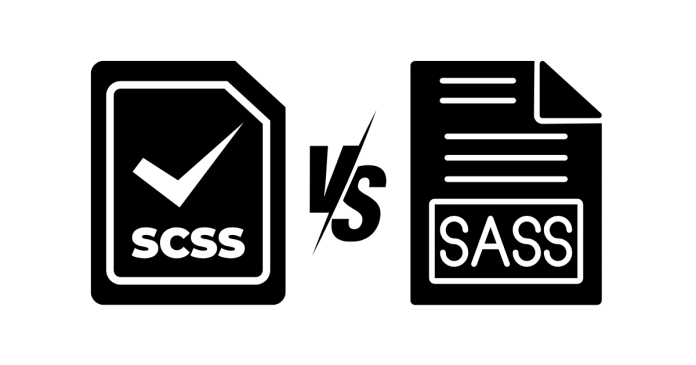SCSS and SASS are both syntaxes of the SASS (Syntactically Awesome Stylesheets) preprocessor, used to extend CSS with features like variables, nested rules, mixins, and more. While they are part of the same framework, they differ primarily in their syntax.
1. SCSS (Sassy CSS)
Definition:
- SCSS is the newer, more widely used syntax of SASS.
- It is fully compatible with CSS, meaning any valid CSS code is also valid SCSS.
Key Features:
- Uses braces
{}and semicolons;like CSS. - Easier for developers who are transitioning from CSS to SASS.
Example:
$primary-color: #3498db;
body {
font-family: Arial, sans-serif;
h1 {
color: $primary-color;
font-size: 2em;
}
}
2. SASS (Indented Syntax)
Definition:
- SASS (in its original form) uses a more concise syntax.
- It relies on indentation instead of braces
{}and semicolons;.
Key Features:
- Cleaner, minimalistic, and easier to read for smaller stylesheets.
- Not directly compatible with plain CSS (requires conversion).
Example:
$primary-color: #3498db
body
font-family: Arial, sans-serif
h1
color: $primary-color
font-size: 2em
Differences Between SCSS and SASS
| Aspect | SCSS (Sassy CSS) | SASS (Indented Syntax) |
|---|---|---|
| Syntax | CSS-like (uses braces {} and semicolons). |
Indentation-based (no braces or semicolons). |
| CSS Compatibility | Fully compatible with plain CSS. | Not directly compatible with plain CSS. |
| Ease of Use | Easier for developers familiar with CSS. | Minimalistic but may have a learning curve. |
| File Extension | .scss |
.sass |
Which One Should You Use?
- Choose SCSS if:
- You’re transitioning from CSS to SASS.
- You prefer a syntax that feels similar to CSS.
- You want to use plain CSS code without converting it.
- Choose SASS (Indented Syntax) if:
- You prefer a cleaner, minimal syntax.
- You’re comfortable with indentation for code structure.
- You’re working on smaller stylesheets or personal projects.
Key Takeaway
Both SCSS and SASS compile into the same CSS code, and you can choose based on your preference or project needs. SCSS is generally more popular because of its CSS compatibility and familiar syntax.



